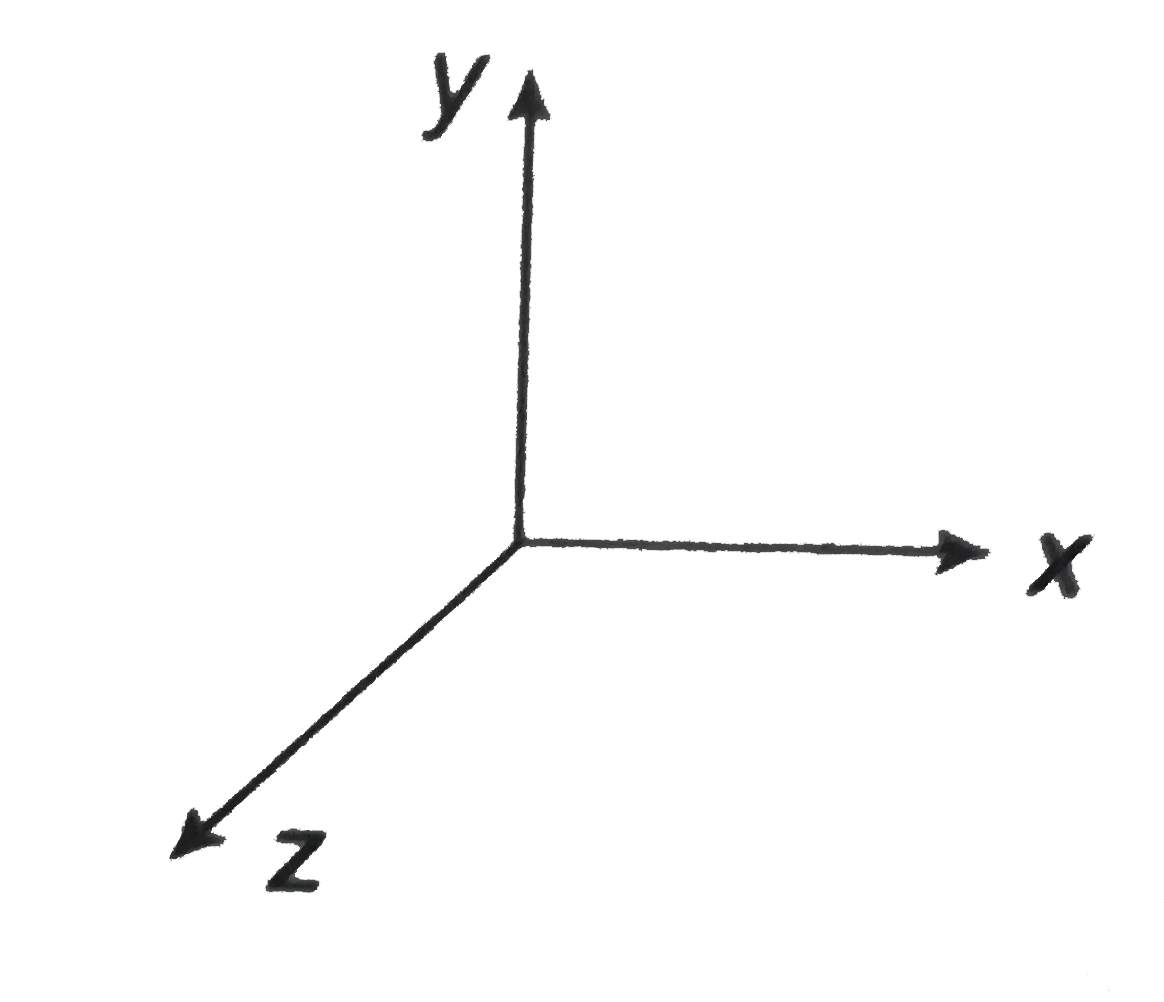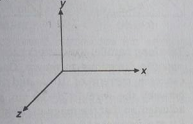A light wave is travelling along +y axis. At a particular point on a given time, electric field vector is along +x axis then the magnetic field vector is directed along:
−z axis
+z axis
−y axis
+y axis
The correct Answer is:A
To solve the problem, we need to determine the direction of the magnetic field vector when a light wave is traveling along the +y axis and the electric field vector is directed along the +x axis.
1. Identify the Direction of Propagation:
The light wave is traveling along the +y axis. This means the wave vector →C is in the direction of the y-axis.
2. Identify the Electric Field Direction:
The electric field vector →E is given to be along the +x axis. This means →E is in the direction of the x-axis.
3. Use the Right-Hand Rule:
According to the electromagnetic wave propagation, the relationship between the electric field →E, magnetic field →B, and the direction of wave propagation →C is given by the right-hand rule:
→E×→B=→C
Here, →C is the direction of wave propagation.
4. Set Up the Cross Product:
We know:
- →E is along +x (let's denote it as ^i).
- The wave is propagating in the +y direction (denote it as ^j).
- We need to find →B.
We can express this as:
^i×→B=^j
5. Determine the Direction of →B:
To find →B, we need to determine what direction will satisfy the equation ^i×→B=^j.
Using the right-hand rule:
- Point your fingers in the direction of ^i (x-axis).
- Curl your fingers towards ^j (y-axis).
- Your thumb will point in the direction of →B.
To achieve this, →B must be in the negative z-direction (since curling from x to y goes downwards towards -z).
6. Conclusion:
Therefore, the magnetic field vector →B is directed along the -z axis.
Final Answer:
The magnetic field vector is directed along the -z axis.
---
The light wave is traveling along the +y axis. This means the wave vector →C is in the direction of the y-axis.
The electric field vector →E is given to be along the +x axis. This means →E is in the direction of the x-axis.
According to the electromagnetic wave propagation, the relationship between the electric field →E, magnetic field →B, and the direction of wave propagation →C is given by the right-hand rule:
→E×→B=→C
Here, →C is the direction of wave propagation.
We know:
- →E is along +x (let's denote it as ^i).
- The wave is propagating in the +y direction (denote it as ^j).
- We need to find →B.
^i×→B=^j
To find →B, we need to determine what direction will satisfy the equation ^i×→B=^j.
- Point your fingers in the direction of ^i (x-axis).
- Curl your fingers towards ^j (y-axis).
- Your thumb will point in the direction of →B.
Therefore, the magnetic field vector →B is directed along the -z axis.
The magnetic field vector is directed along the -z axis.
Similar Questions
A plane electromagnetic wave travels in free space along x-axis. At a particular point in space, the electric field along y-axis is 9.3Vm–1. The magnetic induction (B) along z-axis is
View SolutionAn electromagnetic wave is travelling in a medium with a velocity →v=vˆi with the electric field oscilating along the y-axis
In which direction the magnetic field oscillates?
(b) What is the relation between the amplitude of the electric and magnetic fields?
View Solution
Knowledge Check
An electronmagnetic wae propagating along x-axis then oscillating electric and magnetic field vectors are along
AEy&BzBEx&ByCEx&BxDEz&BxA plane electromagnetic wave of frequency 28 MHz travels in free space along the positive x-direction . At a particular point in space and time, electric field is 9.3 V/m along positive y-direction. The magnetic field (in T) at that point is
A3.1×10−8 along positive z-directionB3.1×10−8 along negative z-directionC3.2×107 along positive z-directionD3.2×107 along negative z-directionA particle of mass m and charge q travelling at a velocity v along x-axis at time t=0. It enters a region in which electric field, E is present along z-axis and magnetic field, B is present along y-axis. The distance covered upto time t=0.2×10−1sec, along x-axis is v/50 (in meters). find the value of v:
 A50EBBE50BCE20BDEB
A50EBBE50BCE20BDEB
An electromagnetic wave propagating along north has its electric field vector upwards. Its magnetic field vector point towards
View SolutionLight wave is travelling along y-direction. If the corresponding →E vector at any time is along the x-axis, the direction of →B vector at that time is along

View SolutionLight wave is travelling along y-direction. If the corresponding →E vector at any time is along the x-axis, the direction of →B vector at that time is along :

View SolutionLight wave is travelling along y-direction. If the corresponding →E vector at any time is along the x-axis, the direction of →B vector at that time is along :

View SolutionAn electromagnetic wave is traveling in the positive x direction with its electric filed along the z axis and its magnetic field along the y axis . The fields are related by
View Solution
